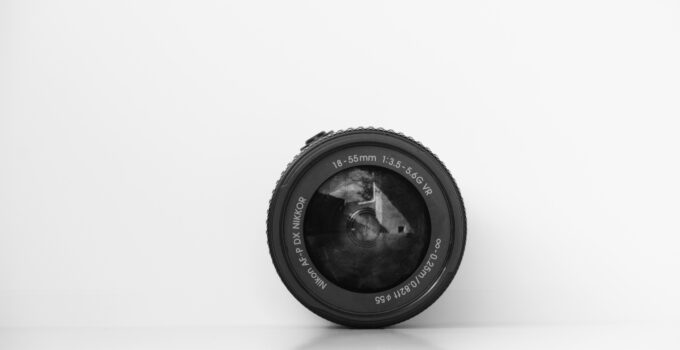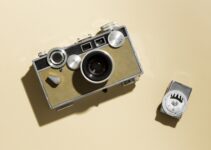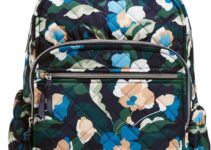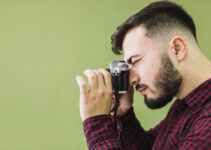Embarking on a photography adventure in the bustling cityscape demands the right lenses to capture its essence.
The plethora of lens choices can be overwhelming, but fear not! In this guide, we will reveal the must-have lenses that will elevate your city photography and make your camera bag a powerhouse of creativity.
Let’s dive in!
Here check out how to pack a camera without a camera bag?
Understanding Different Types of Camera Lenses
1.Prime Lenses
Prime lenses are a type of camera lens with a fixed focal length, meaning they cannot zoom in or out. They offer excellent image quality, are often faster (wider aperture), and typically have fewer elements, resulting in sharper and clearer photos.
Their fixed perspective encourages photographers to be creative with composition and framing.
Prime lenses are preferred for portraits, low-light conditions, and achieving a shallow depth of field, making them a popular choice among photographers seeking superior optical performance.
2 Zoom Lenses
Zoom lenses are a versatile type of camera lens that allows photographers to adjust the focal length and vary the magnification of the subject.
Unlike prime lenses, zoom lenses can cover a range of focal lengths, offering both wide-angle and telephoto capabilities.
This flexibility makes them convenient for various shooting scenarios, as they eliminate the need for frequent lens changes.
While zoom lenses are convenient, they may sacrifice some image quality compared to prime lenses due to their more complex optical design.

Here how to carry around two lenses and a camera in a side bag?
3 Wide-Angle Lenses
Wide-angle lenses have a short focal length, enabling them to capture a broader field of view. They are ideal for landscapes, architecture, and situations where you want to fit more into the frame.
These lenses exaggerate perspective, making subjects closer to the lens appear larger while distant objects seem smaller. They offer a sense of depth and can create dramatic, sweeping compositions.
However, due to their unique characteristics, photographers need to be mindful of potential distortion and vignetting at the edges of the frame.
4 Telephoto Lenses
Telephoto lenses have a longer focal length, allowing photographers to capture distant subjects with greater magnification.
They compress perspective, making far-off objects appear closer and larger. These lenses are popular for wildlife, sports, and portrait photography, where getting physically close to the subject might not be feasible.
Telephoto lenses also create a shallow depth of field, isolating the subject from the background.
However, they can be heavier and more expensive, and camera stabilization is often necessary to avoid image blur from hand movement.
Here do i need to take of my camera lens?
5 Macro Lenses
Macro lenses are designed for close-up photography, allowing you to capture tiny subjects with intricate detail. These specialized lenses have a high magnification ratio, enabling subjects like insects, flowers, or small objects to fill the frame without losing sharpness.
They offer excellent optical quality and minimal distortion at close distances. Macro lenses often have a long focal length to maintain a comfortable working distance from the subject.
They are a favorite tool for photographers who want to explore the fascinating world of small-scale photography.
6 Fisheye Lenses
Fisheye lenses are ultra-wide-angle lenses with extreme distortion. They provide a hemispherical field of view, capturing a 180-degree scene, resulting in a unique, curved effect.

Fisheye lenses are known for their exaggerated perspective, bending straight lines and creating a “fish-eye” effect. They are popular for creative and artistic purposes, offering a surreal and distinctive look to photographs.
However, due to their strong distortion, fisheye lenses are not typically used for traditional or realistic photography, but rather for experimental and imaginative compositions.
Let’s ahe a look now what lenses you must carry in your camera bag?
What lenses you must carry in your camera bag?
In a camera bag, one might carry a variety of lenses depending on their photography preferences and needs.
Here are some common types of lenses photographers often carry in their camera bags when shooting in the city:
Here strap inside camera bag if for what use?
1. Standard Zoom Lens:
A versatile lens with a focal length typically around 24-70mm or 18-55mm, which covers a range from wide-angle to moderate telephoto. It’s great for general street photography and capturing a variety of scenes.
2. Wide-Angle Lens:
This lens has a focal length below 24mm, allowing you to capture expansive cityscapes, architecture, and immersive street scenes.
3. Prime Lens (e.g., 50mm, 35mm):
Fixed focal length lenses that offer excellent image quality and often have wider apertures, making them ideal for low-light situations and creating a shallow depth of field for artistic portraits.
4. Telephoto Lens:
A lens with a focal length above 70mm, suitable for capturing distant subjects, candid portraits, and compressing perspectives in the city.
5. Macro Lens:
For photographers interested in close-up shots, macro lenses enable capturing intricate details of urban textures, small objects, and street photography.
6. Fisheye Lens:
A specialty lens with an ultra-wide-angle perspective, capable of producing distorted, circular images. It’s used for creative and artistic shots.
7. Superzoom Lens:
These lenses cover a broad focal length range, from wide-angle to telephoto, offering convenience for a variety of shooting situations.
8. Tilt-Shift Lens:
Mainly used in architectural photography, these lenses correct perspective distortion and allow for precise control over the plane of focus. Here how to use amazon camera bag.
9. Lens Accessories:
In addition to lenses, photographers may also carry lens filters (e.g., polarizers, ND filters), lens hoods, and lens cleaning equipment to maintain and protect their gear.
Now let’s have a look how you choose the right lens for the right moment.
Choosing the Right Lens for the Right Moment
1 Portrait Photography
For portrait photography, a prime lens with a moderate focal length, like 50mm or 85mm, is a popular choice. These lenses provide a flattering perspective and produce natural-looking images.
A wide aperture (low f-number) is beneficial for creating a shallow depth of field, blurring the background and drawing focus to the subject’s face.

Prime lenses usually offer superior image quality and sharpness. Their fixed focal length encourages creativity in composition, making them ideal for capturing compelling and intimate portraits.
2 Landscape Photography
In landscape photography, wide-angle lenses are commonly used to capture vast scenic views with sharpness and depth.
Lenses with focal lengths around 16mm to 35mm are preferred for their ability to include more elements in the frame and emphasize the grandeur of nature.
A small aperture (high f-number) ensures a large field depth, keeping foreground and background in focus.
Landscape photographers often seek lenses with excellent optical quality and minimal distortion to convey the beauty of the natural world accurately.
3 Street Photography
For street photography, a versatile prime lens like 35mm or 50mm is a popular choice. These lenses offer a natural perspective and are lightweight and inconspicuous, allowing photographers to blend into the environment and capture candid moments.
A wide aperture (low f-number) helps in low-light situations and creates a shallow depth of field, isolating the subject from the background.
With their fast autofocus and superior image quality, prime lenses are ideal for capturing the vibrant and dynamic scenes of street life.
4. Wildlife Photography
In wildlife photography, the right lens selection is vital to capture elusive creatures from a distance without disturbing them. Telephoto lenses with long focal lengths, like 300mm to 600mm, are preferred for their ability to bring subjects closer.
Image stabilization is crucial for sharp shots at high magnification, especially in challenging outdoor conditions. Fast autofocus ensures quick and accurate focus on moving animals.
These features combined enable wildlife photographers to document captivating and intimate moments of animals in their natural habitats.
5. Sports Photography
Sports photography requires lenses with quick autofocus and high-speed capabilities to freeze fast-paced action. Telephoto lenses, like 70-200mm or 300mm, provide the necessary reach to capture athletes from a distance.
A wide aperture (low f-number) enables shooting in challenging lighting conditions, such as indoor stadiums.
Image stabilization helps prevent blur during handheld shooting.
Sports photographers often choose lenses with superior optical performance to capture the intensity and excitement of sporting events with clarity and precision.
6. Macro Photography
Macro photography requires specialized lenses with a high magnification ratio to capture small subjects with intricate detail. True macro lenses offer a 1:1 magnification, rendering objects life-size on the camera sensor.
These lenses have a close focusing distance, enabling photographers to get very close to the subject.
Additionally, they provide excellent sharpness and minimal distortion, making them perfect for capturing the beauty of tiny insects, flowers, and other small objects up close.
Let’s move to some related faq’s
Related faq’s
How do you keep a camera lens in a bag?
To keep a camera lens in a bag, follow these steps:
- Ensure the lens cap is securely placed on the front of the lens to protect it from dust and scratches.
- Place the lens gently into a padded compartment in the camera bag, preventing any impact or jostling during transportation.
- Arrange the bag’s dividers or padding to create a snug fit around the lens, preventing movement.
- Close the bag securely to shield the lens from the elements and potential damage.
Does a camera bag protect the camera?
Yes, a camera bag provides essential protection for the camera. It shields the camera from dust, moisture, and minor impacts, reducing the risk of scratches and damage during transport.
The bag’s padded compartments and dividers keep the camera and its accessories secure, preventing them from knocking against each other.
Additionally, camera bags often come with weather-resistant materials, further safeguarding the camera against environmental elements.
However, for more extreme conditions or potential accidents, additional protective measures may be required.
What is the best camera bag for 600mm lens?
The best camera bag for a 600mm lens would ideally be a specialized, large-capacity backpack or a rolling case designed to accommodate super-telephoto lenses.
Look for durable materials, customizable interior dividers, and ample padding to ensure a secure fit and maximum protection.
Brands like Lowepro, Think Tank Photo, and Gura Gear often offer excellent options for professional-grade camera bags suitable for carrying and protecting large lenses like a 600mm.
Conclusion
In conclusion, a camera bag filled with carefully selected lenses can elevate your photography to new heights.
Understanding the different types of lenses available and knowing when to use each one will enhance your creative abilities as a photographer.
Remember to consider factors like aperture, focal length, and image stabilization when choosing lenses for specific photographic scenarios.
As technology continues to advance, we can expect even more innovative and groundbreaking lenses to shape the future of photography.
.







